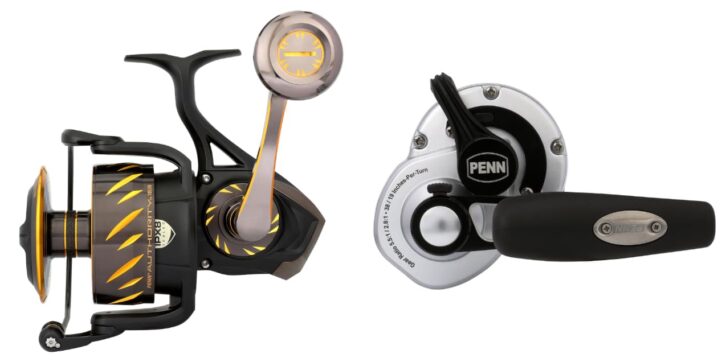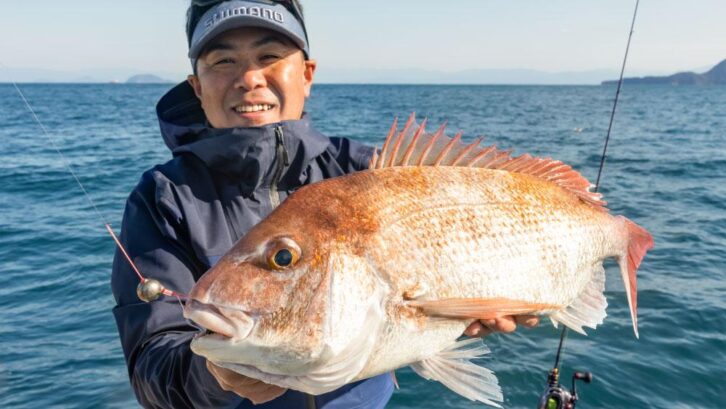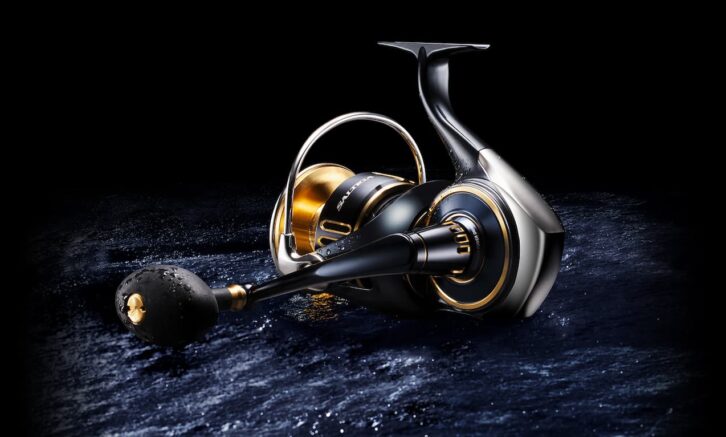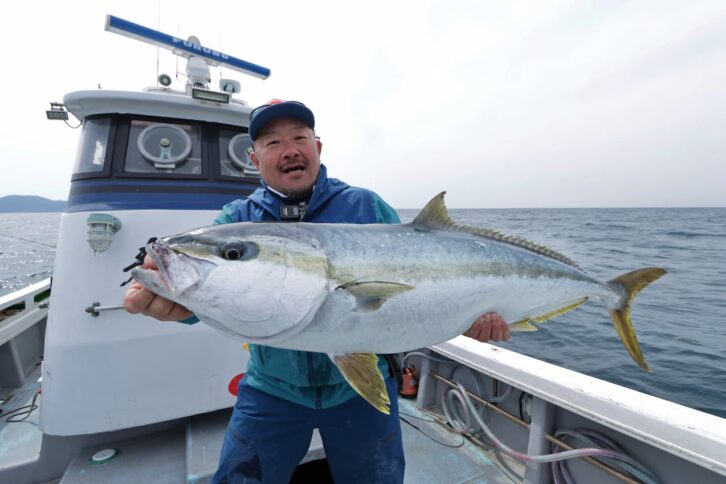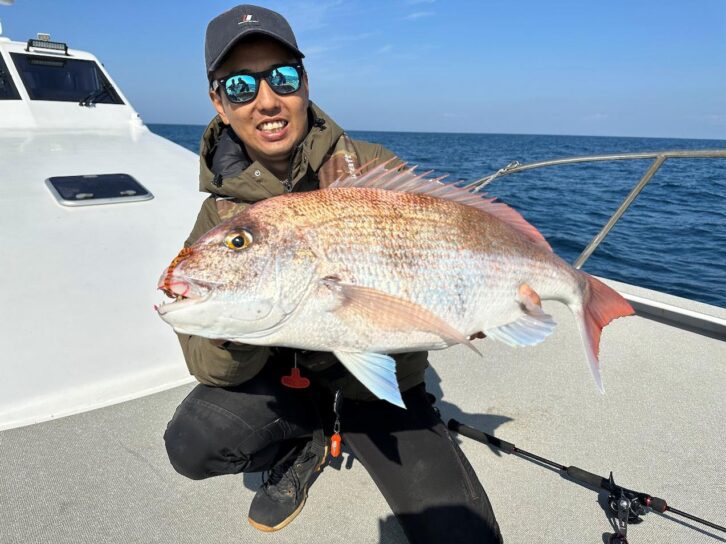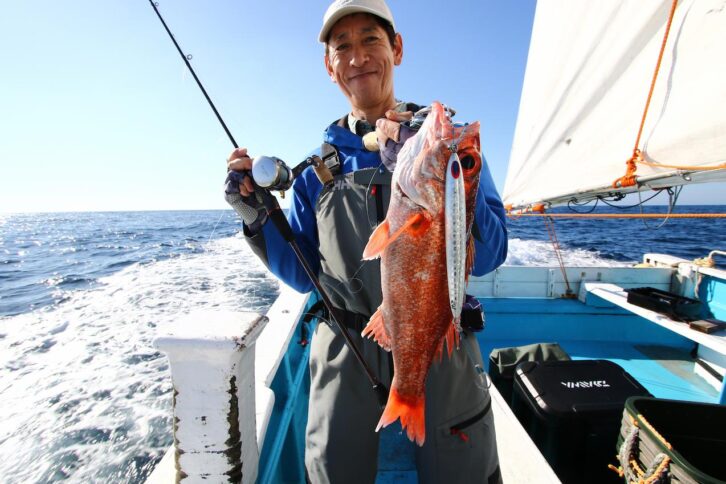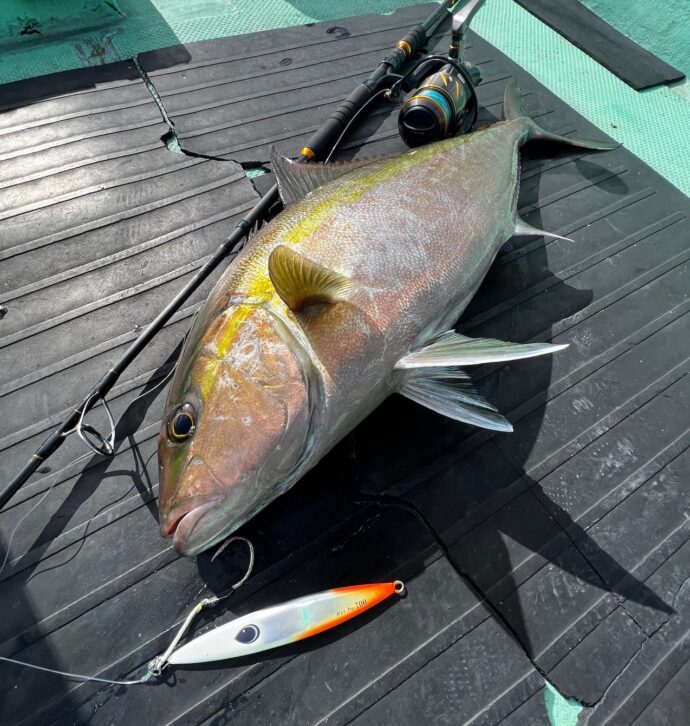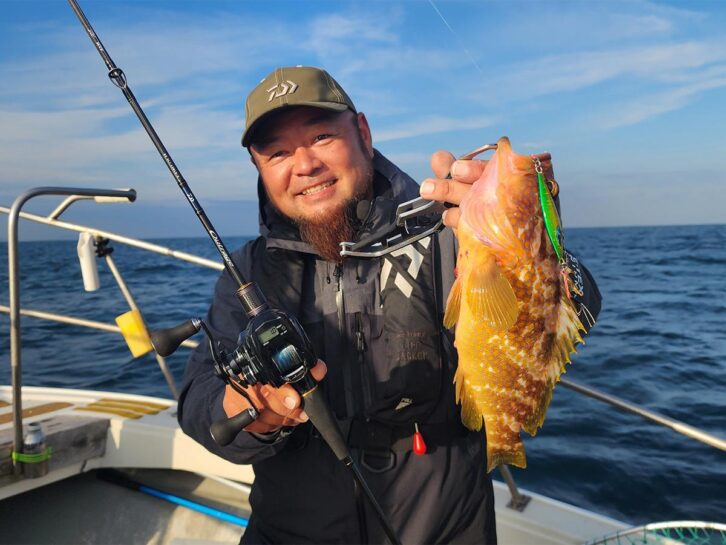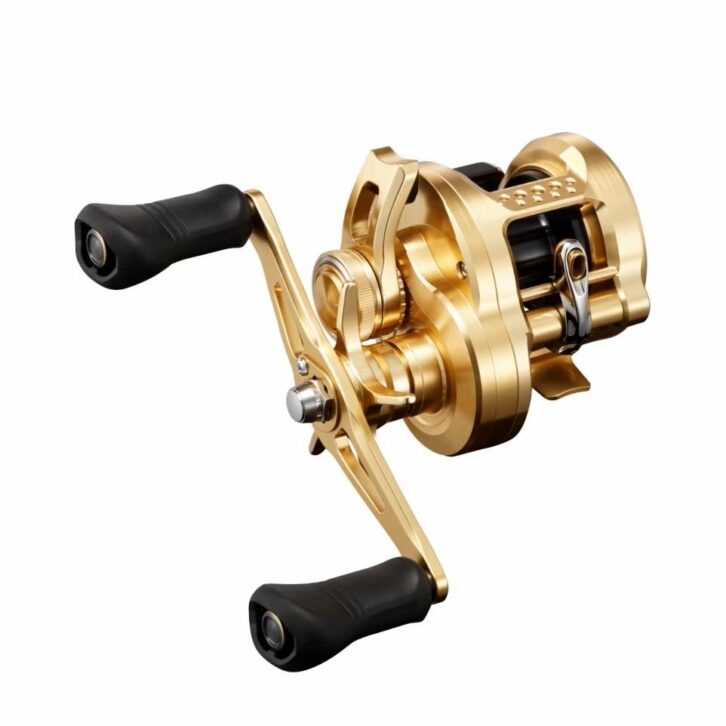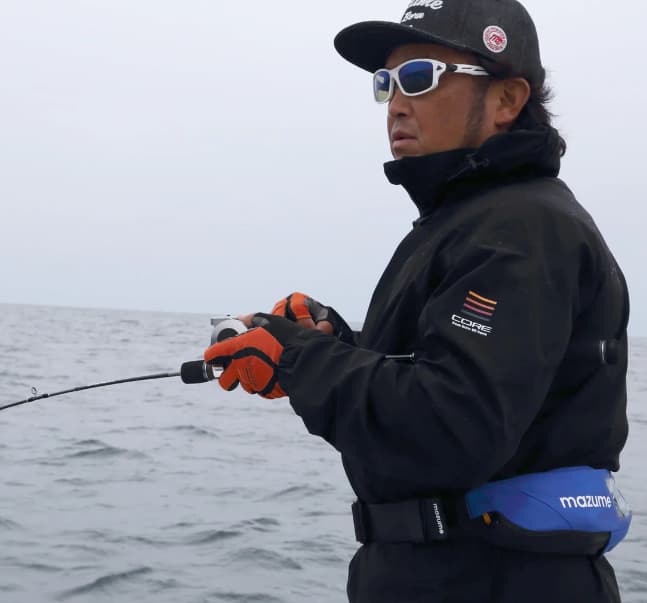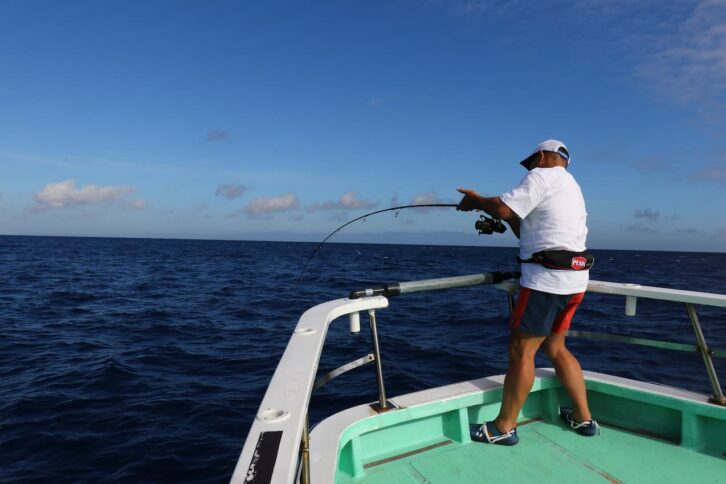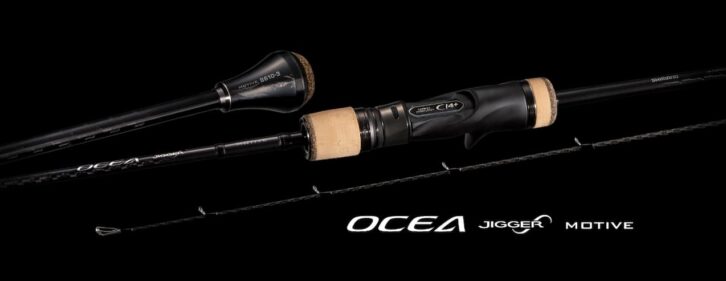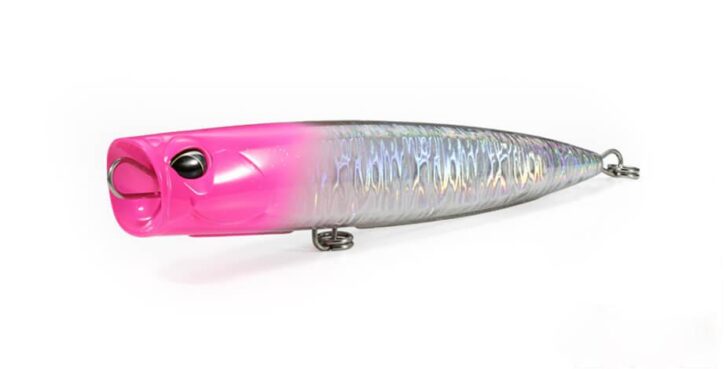A revolutionary item that is the talk of the town
As I thought, this is useful! Verifying the power of Happison’s “Tsumoto Style Anisakis Light!
Anisakis, a parasite that can be found even in offshore fish, does not die even if the fish is tightened with salt or vinegar, and is hard as rubber, making it difficult to "chew" it well. The most effective way to deal with them is to remove them visually. This is where Happison's "Tsumoto-style Anisakis Light" comes in handy. Using this item, which has been talked about for its high visibility, we tested whether anisakis can be found or not.


INDEX
Illuminates Anisakis with its wavelength of light and overwhelming amount of light
Happison’s “Tsumoto-style Anisakis Light” is a black light for finding anisakis, supervised by Mitsuhiro Tsumoto, well-known for his “Tsumoto-style Ultimate Blood Drainer. The item uses a high-powered black light to project anisakis in fish meat, internal organs, and on cutting boards. It also features IPX7* specifications, which boast high water and dust resistance, making it safe to use with wet hands.
IPX7 (protection against submersion)/means that the functions of the device will work when the device is submerged in tap water (still water) at room temperature to a depth of 1 m and left for about 30 minutes before being removed.
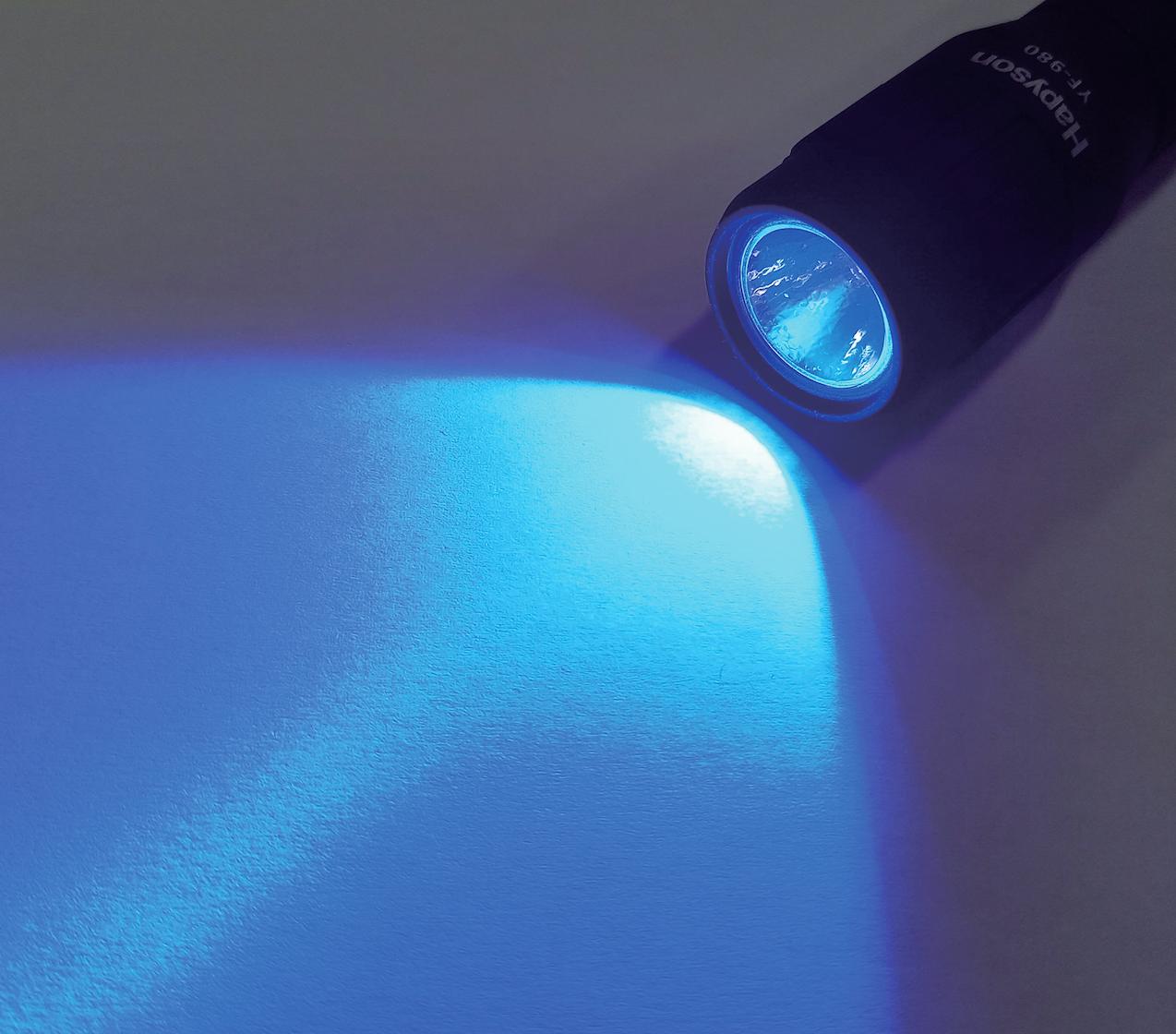
The powerful UV light clearly shows anisakiasis even in a bright room! However, it is strictly prohibited to look directly at the light source part because the light is so strong that it may cause blindness or eye damage!
The dreaded parasite Anisakis
Anisakis is a type of nematode parasite that lives in fish and shellfish such as horse mackerel, mackerel, bonito, salmon, and squid. If eaten alive, they can burrow into the stomach and intestinal walls, causing food poisoning (anisakiasis) such as severe abdominal pain and vomiting, as well as allergic symptoms. They are not harmless when soaked in vinegar or soy sauce, and can be completely killed by freezing (at -20°C for 24 hours or more) or heat treatment (at 60°C for 1 minute or more).
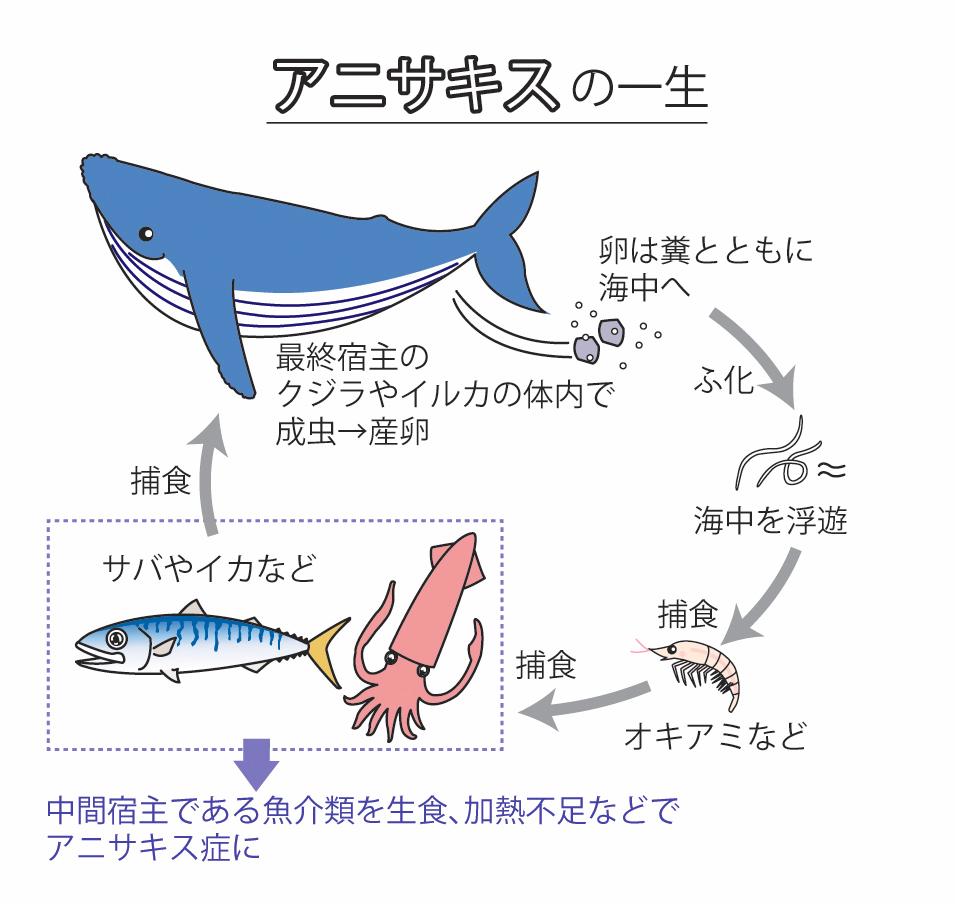
Verified with skipjack and Japanese common squid!
Anisakis is known to be a parasite of many fish, including horse mackerel, sardine, mackerel, Pacific saury, Pacific saury, horse mackerel, flatfish, bonito, Spanish mackerel, Japanese butterfish, Japanese butterfish, grouper, squid, red sea bass, cod, hokke, salmon, snapper, and anglerfish, with mackerel, skipjack and squid being the most common.
Therefore, we purchased skipjack and squid sold in fresh fish stores (whole fish, not fillets) and verified how we could see anisakis when using “Anisakis Light”.
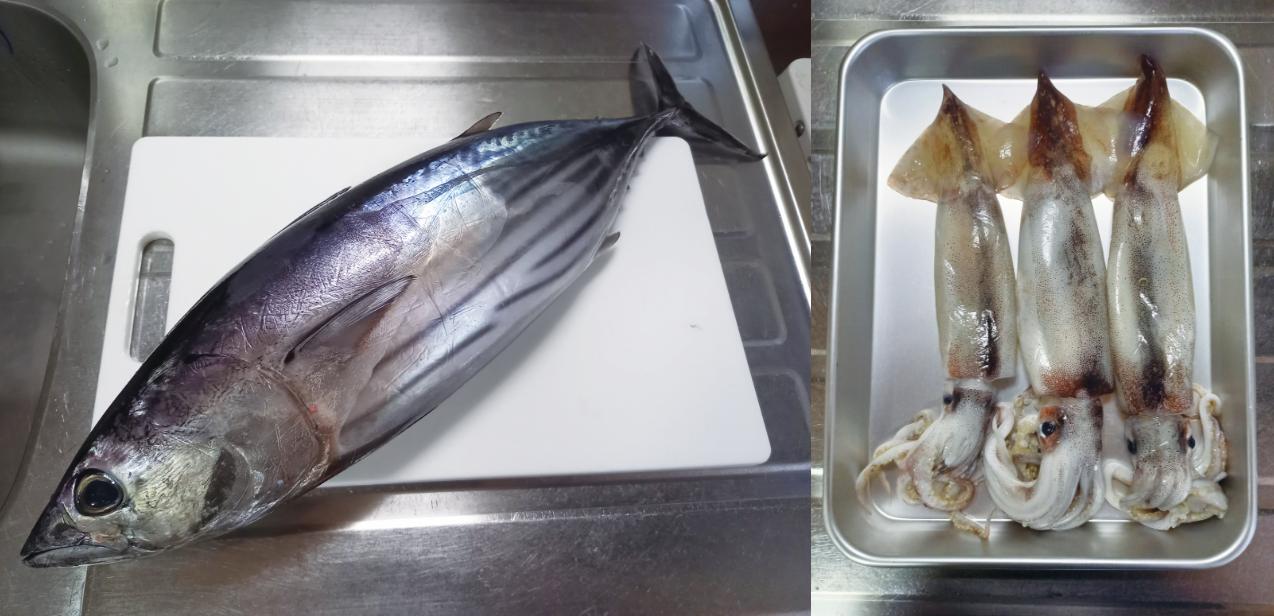
Assuming that anisakis is the final host of whales and dolphins, we thought that fish caught in the open sea area would have many anisakis, so we purchased skipjack caught in the Pacific Ocean and Japanese common squid caught in the Sea of Japan. These are processed and illuminated with a light!
Bonito
Anisakis are parasites that live in the internal organs of fish and have the habit of migrating to the muscle (meat) when the host dies. Although the fish is not to be eaten raw, we first checked the internal organs, where anisakis are most likely to be present.
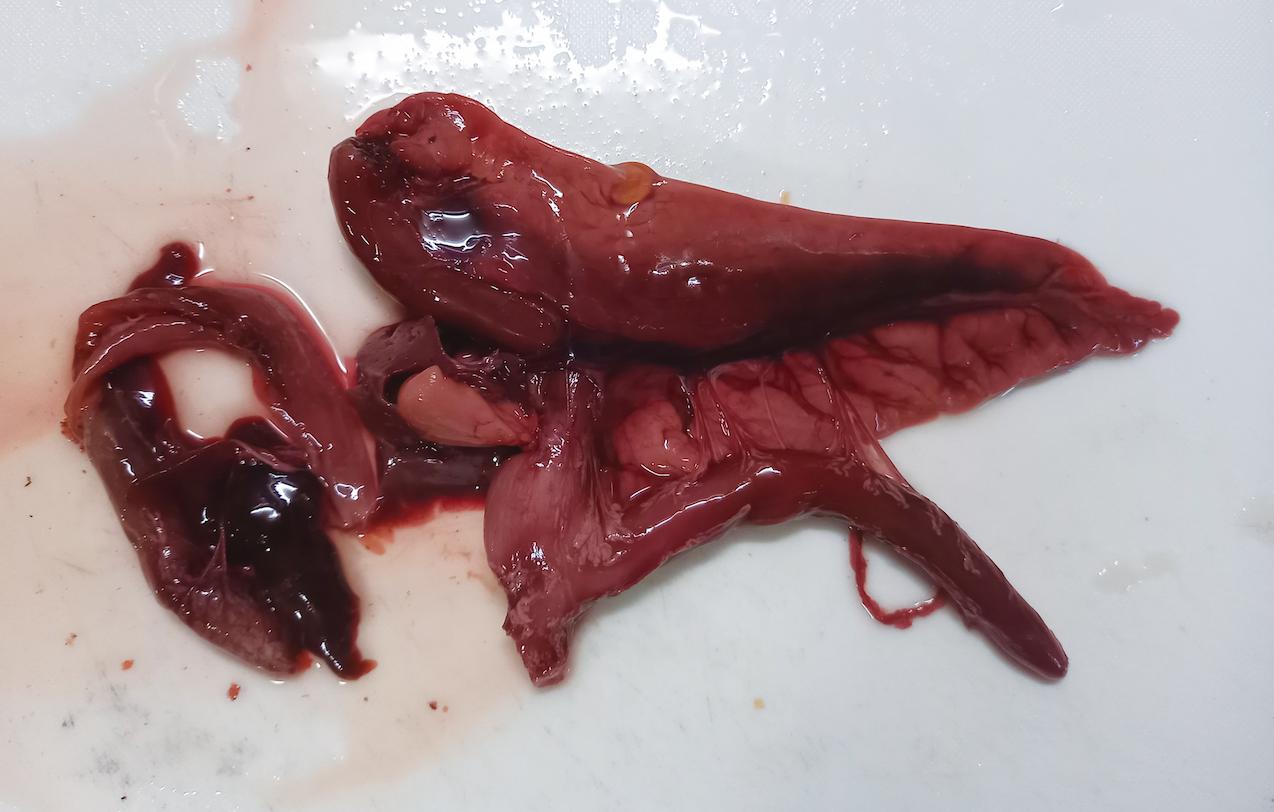

We checked various parts of the internal organs, but surprisingly found no anisakis. I wondered if the anisakis had moved to the meat. Just as I was thinking, “Have they moved to the meat?” I found two glowing white anisakis in the organ that looked like a stomach pouch!
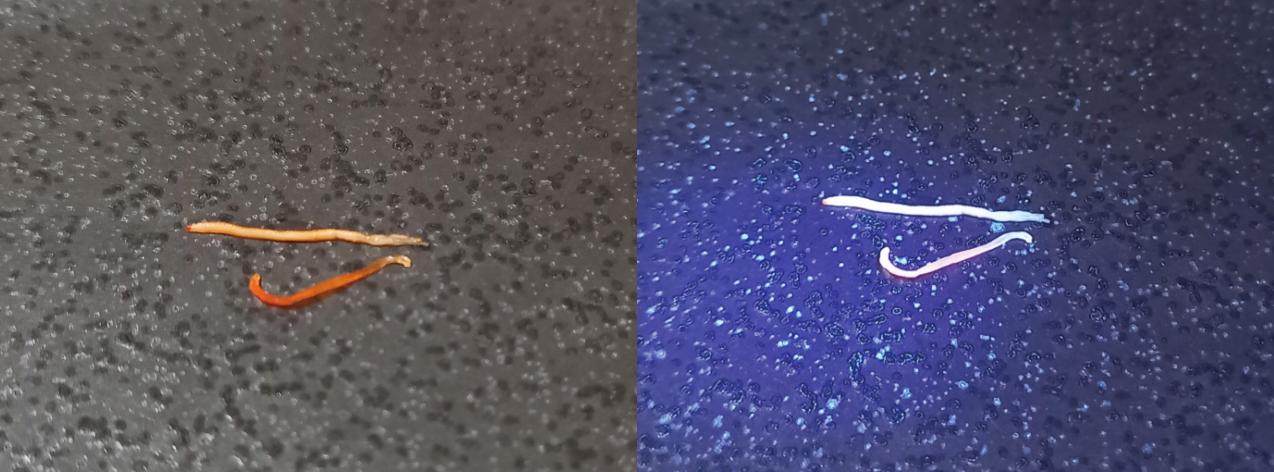
Without light and With light
The captured anisakis had already died. Still, they look good when the light is shined on them!
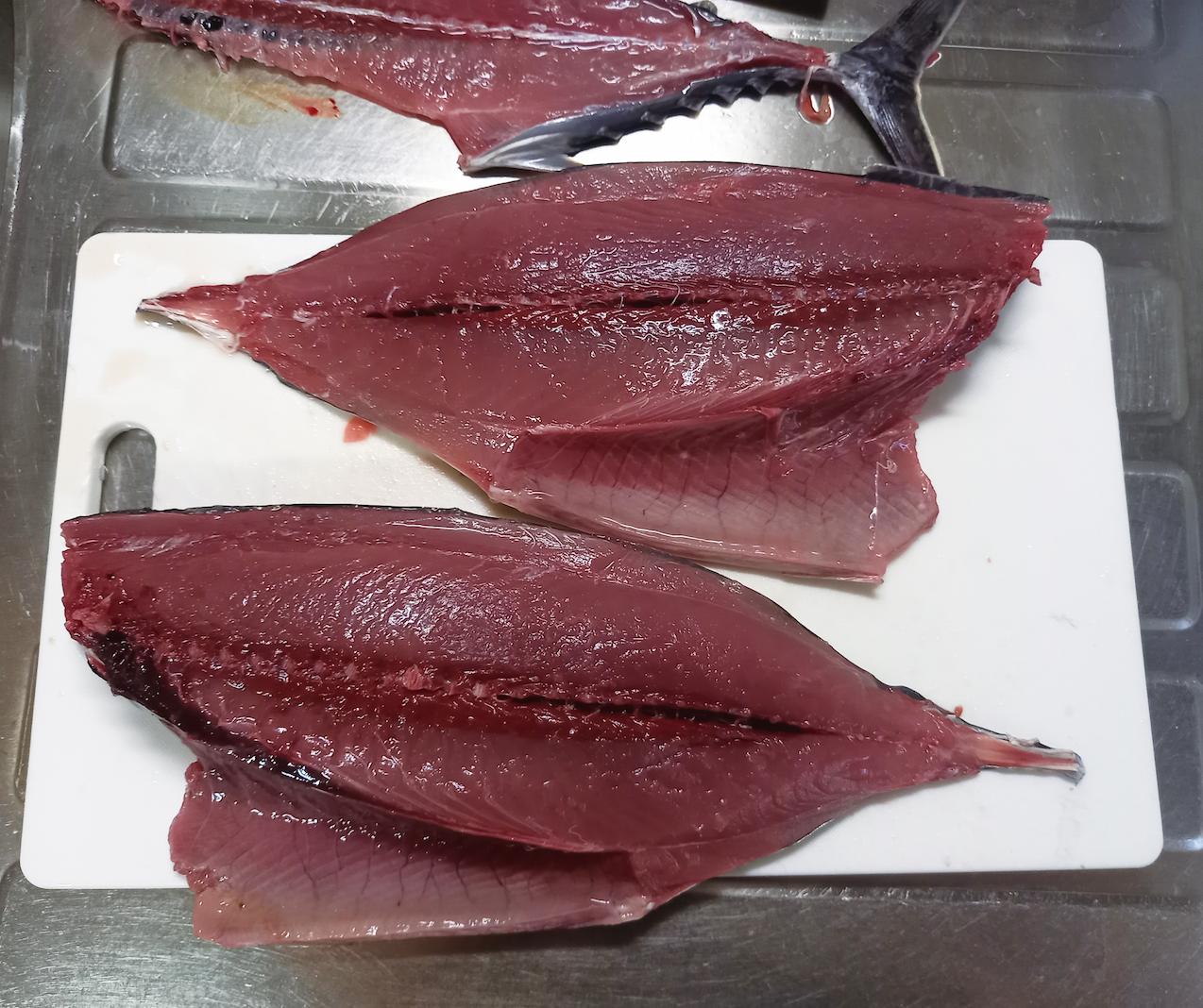
Next is the edible part, the meat. Since the fish was freshly caught and sold for sashimi, it was expected that the anisakis had not migrated to the meat.

When illuminated with a light, a long, thin, bluish-white object glowed near the anus. Anisakis was found!
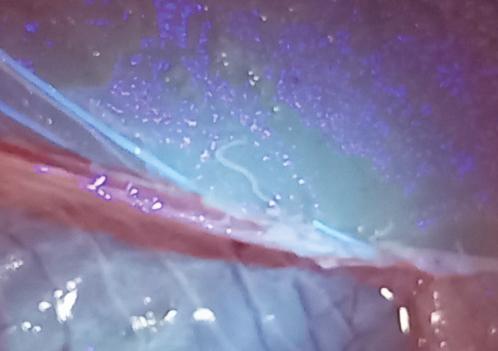
Enlarged image! It was hard to see in the photo due to the lighting, but it was clearly visible to the naked eye as if it was floating. We captured two anisakis in total, one on each side of the body.

When the “Anisakis Light” was irradiated on the anisakis again, it was obvious at a glance whether or not anisakis were present!
We also checked the fillets for sashimi by shining the light on them, but unfortunately? No other anisakis could be confirmed.
Surume-ika (Japanese common squid)
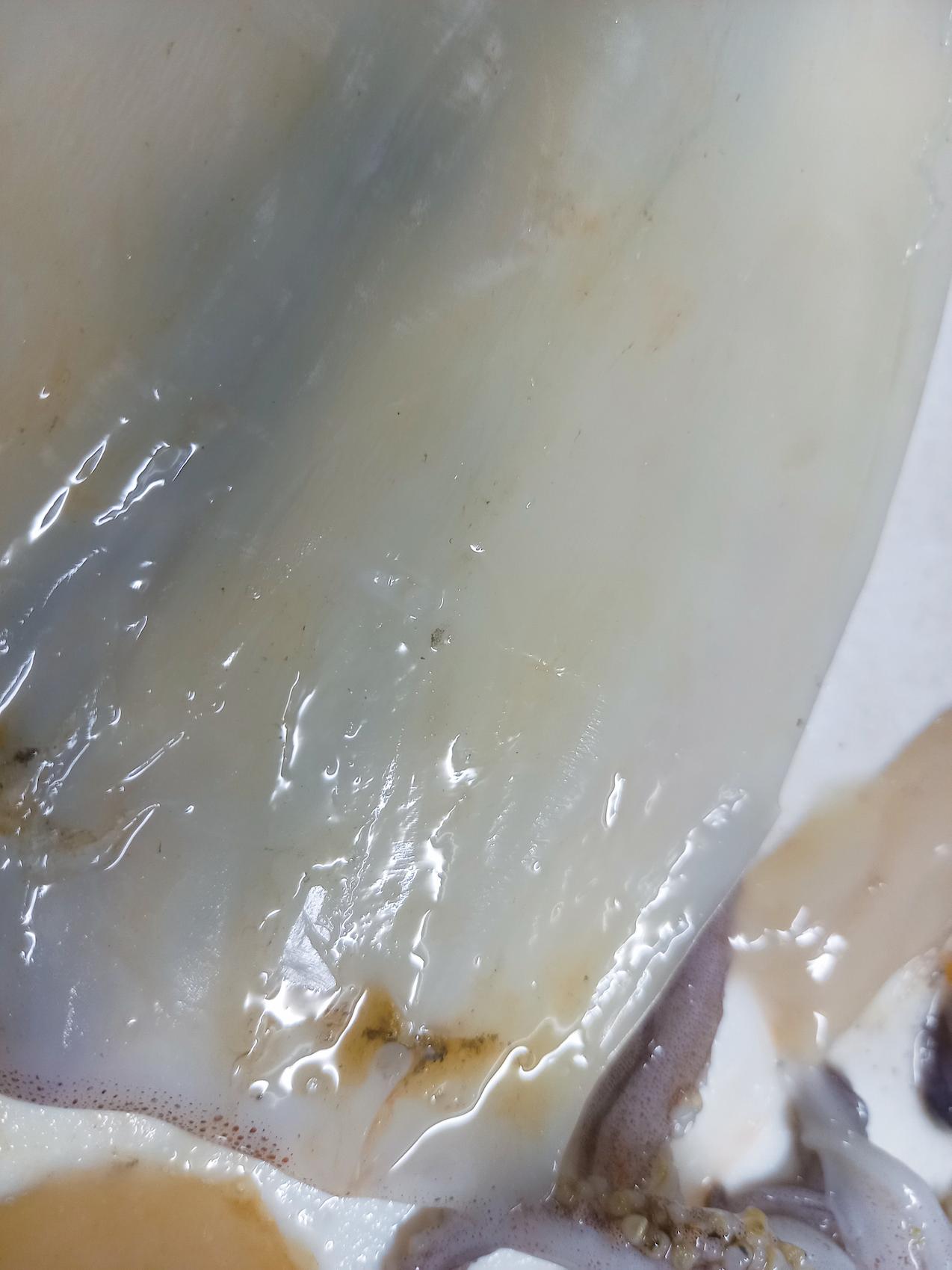
The body of a Japanese common squid, opened. At a quick glance, there seemed to be no anisakis.
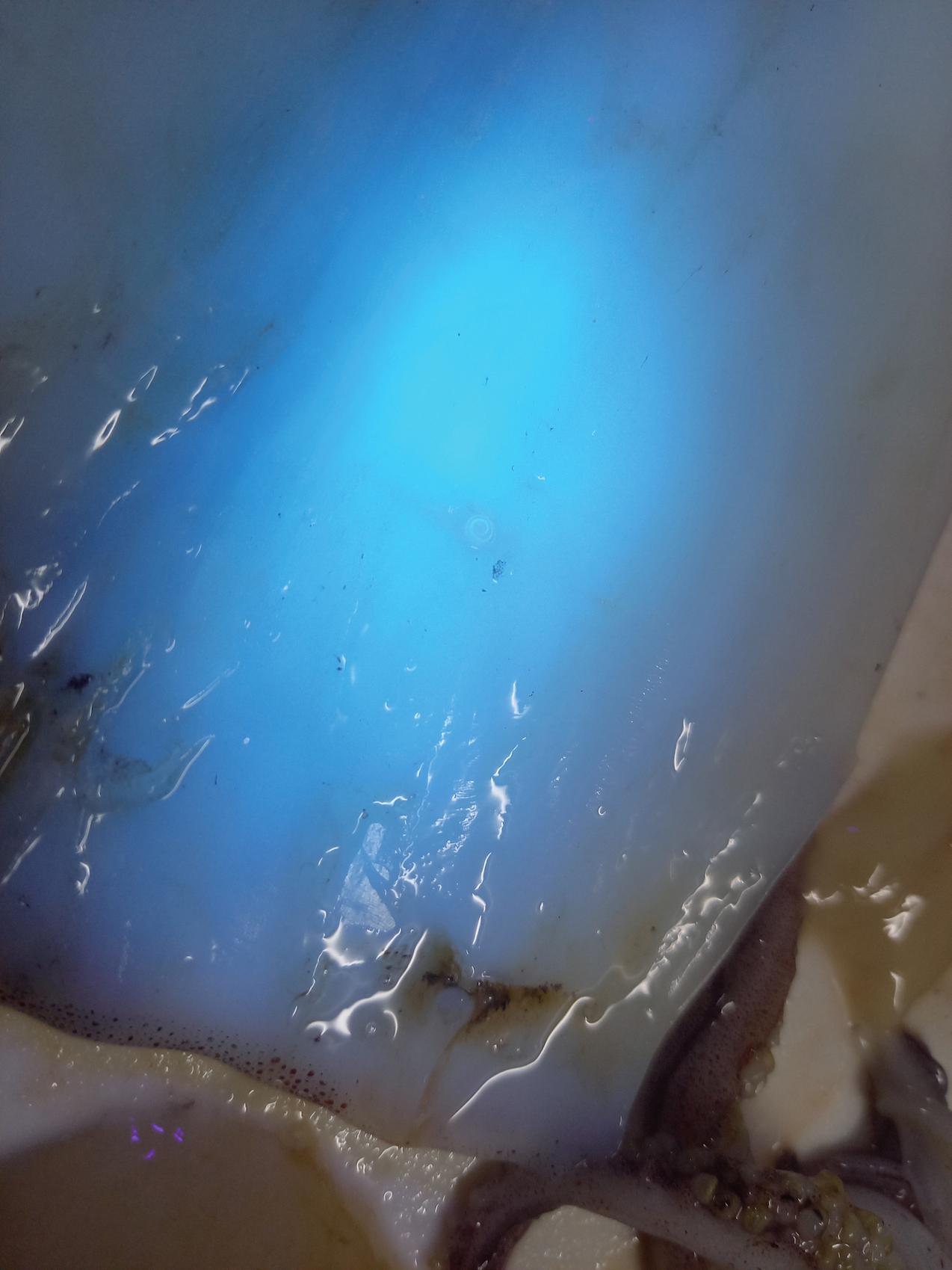
Light irradiation! I found something spiral-shaped (near the center of the image). I took tweezers to remove it, and to my surprise, it was an anisakiasis!
↓When it is enlarged!

I broke out in a cold sweat when I thought of …… if I had eaten it as sashimi without noticing. (Note that this was the only anisakis parasite on the squid.
The rest of the squid were also checked with a light!
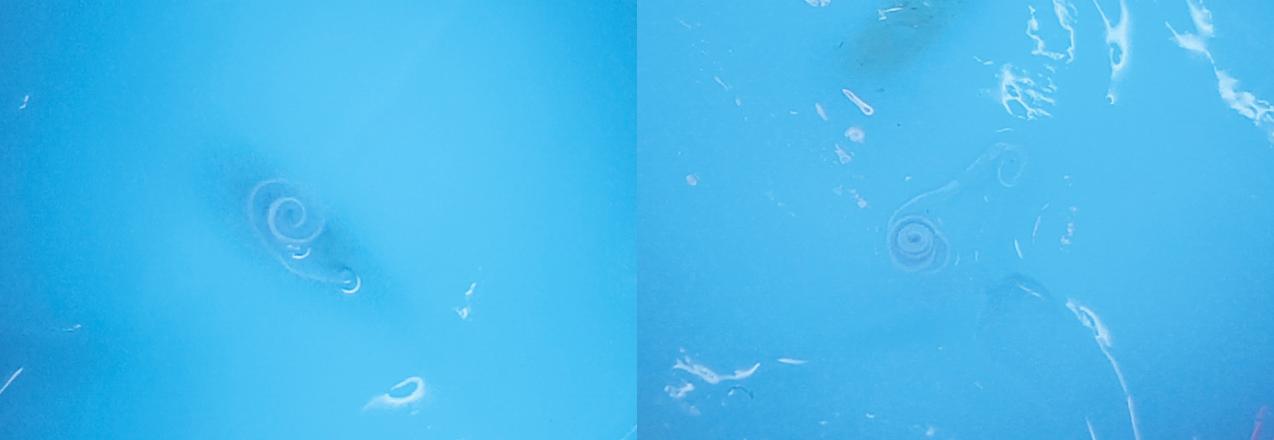
One anisakiasis was also found in each of the remaining two highs. If I had not used the light, I would have missed this one too. Anisakis parasites on squid meat are that hard to find!
Verification result
To be honest, we thought we would be able to find Anisakis without using the light. In fact, I was able to find anisakis without the light for skipjack, but the light made the anisakis glow and was much easier to find. However, the color of the anisakiasis on the squid was so different from that of the squid’s flesh that it was very difficult to find the anisakiasis, and the reporter was able to pass by them with flying colors. I shudder to think what would have happened if I had made sashimi without using “Anisakis Light.
The same test was also conducted with a commercially available black light, but the difference in performance between the “Anisakis Light” and the “Anisakis Light” was obvious! We were able to experience the superiority of the high power and the wavelength that makes it easy to find anisakis.
It is a privilege for anglers to be able to eat fresh fish raw as sashimi. Let’s try using this light to eat fish caught offshore with peace of mind!
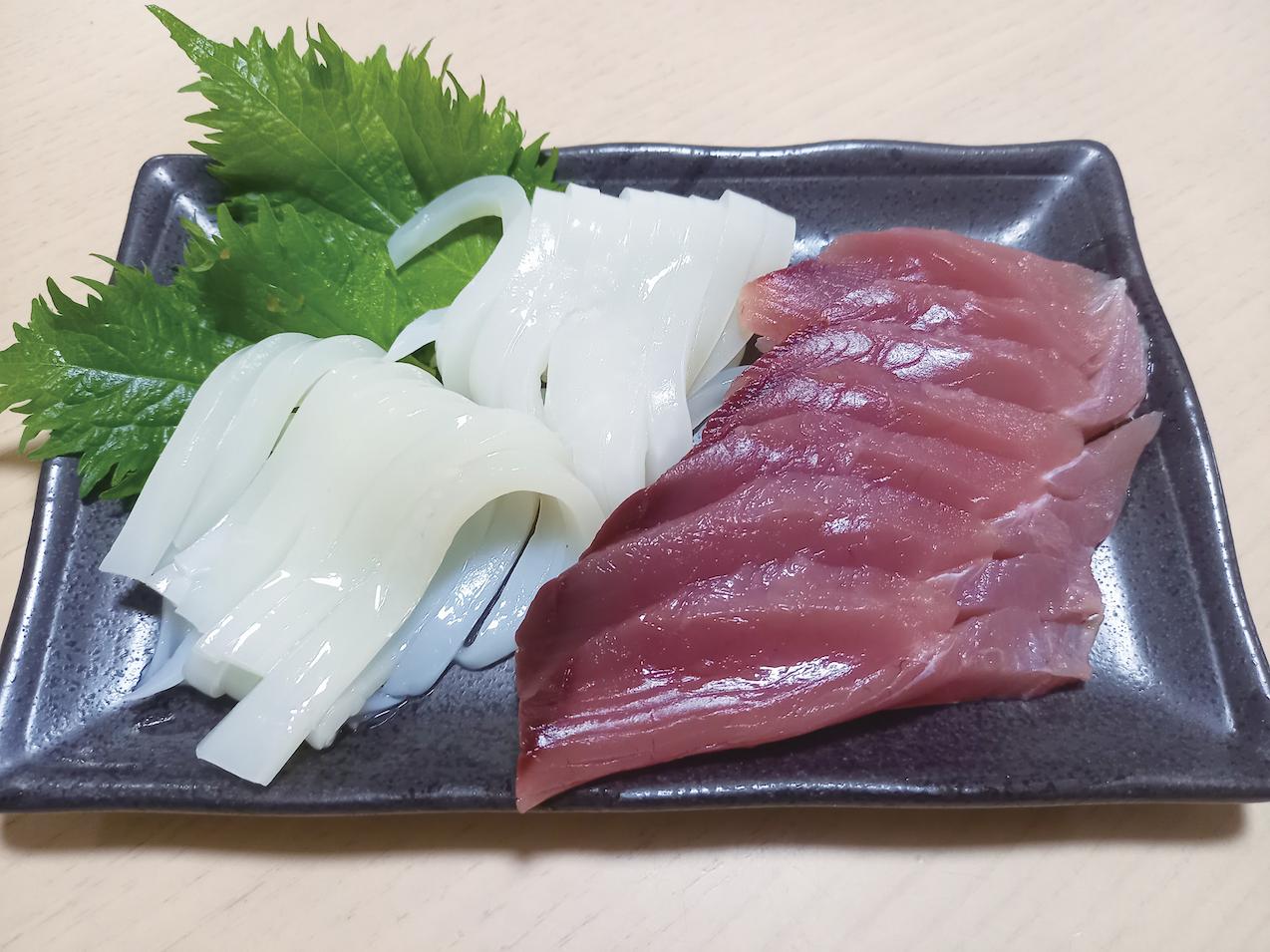
Bonito and Japanese common squid used in the verification were served as sashimi and tasted delicious.


